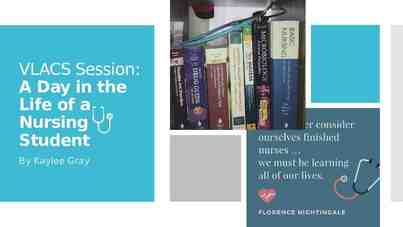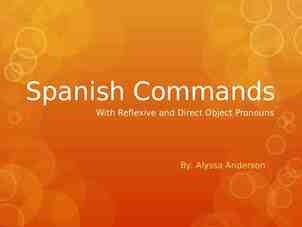Fluency Module Oregon Reading First Regional Coaches’
53 Slides934.00 KB

Fluency Module Oregon Reading First Regional Coaches’ Meetings February 19 and 21, 2008

Parts of today’s presentation is based upon an earlier presentation by: Sarah Mc Donagh Western Regional Reading First Technical Assistance Center

Objectives 1. Identify the Components of Reading Fluency. 2. Determine how to assess automaticity and fluency development and establish the need for fluency building. 3. Plan for automaticity and fluency instruction in the classroom

What Skills Does Fluency Include? 1. Produces letter-sound correspondences (1 per second) Begins in kindergarten and is a goal in grade1. – Example: Given a set of letters, the student can produce the associated sound within 1 second. 2. Reads sight words automatically. (Grades 1 and 2) – Example: Given a set of irregular words in a set or in a passage, can identify words in 1 second or less. 3. Reads connected text fluently – Example: See DIBELS progressive benchmarks.

What Skills Does Fluency Include? Accurate and efficient skills in: – Letter-sound correspondences (alphabetic understanding) – Blending sounds to form words (alphabetic principle) – Word identification (regular and irregular) – Word knowledge or vocabulary – Comprehension monitoring

Assessing Automaticity: DIBELS NWF Examine Student Booklets for Patterns How well does the child perform the skill? – Accuracy – Fluency General performance patterns: Not Accurate: student makes many letter-sound/nonsense word reading errors or is prompted by the examiner to move on to additional items. Accurate but Slow: student reads letter-sounds/nonsense words with over 90% accuracy; however, many hesitations, repetitions and slow pace. Fast but Not Accurate: student is fast but makes many letter-sound/nonsense word reading substitution errors. Fluent Reading: student reads letter-sound/nonsense words with good speed and accuracy.

Assessing Automaticity: DIBELS NWF Frank 16 What is Frank’s knowledge of the alphabetic principle? – Inconsistent on letter-sounds – Does not blend any sounds together How accurately can Frank perform the skill? – 70% accuracy Readiness for automaticity instruction? – Focus on accuracy instruction – Develop automaticity with known letter-sounds Instructional implication? – He is in need of intensive intervention to meet the end of year goal of being a reader.

Assessing Automaticity: DIBELS NWF Tanya 58 What is Tanya’s knowledge of the alphabetic principle? – Accurately produces all letter sounds – Consistently blends sounds together to read the word How accurately can Tanya perform the skill? – 100% accuracy Readiness for automaticity instruction? – Not required at the letter-sound level – Develop automaticity with known words: regular and irregular – Provide opportunities for connected text reading Instructional implication? – Has met mid year benchmark. – Move to instruction on connected text reading.

Assessing Fluency: DIBELS ORF Examine Student Booklets for Patterns How well does the child perform the skill? – Accuracy – Fluency General reading patterns: Not Accurate: student makes many word reading errors or is provided words after the 3-second wait. Accurate but Slow: student reads words with over 90% accuracy; however, many hesitations and repetitions. Fast but Not Accurate: student is fast but makes many word reading or word substitution errors. Fluent Reading: student reads with good speed and accuracy.

Assessing Fluency: DIBELS ORF Terry How well is Terry reading? – Accurate but slow How accurately can he perform the skill? – 92%! Readiness for fluency instruction? – Fluency building and sight word instruction may be appropriate Beginning of Second Grade

Assessing Fluency: DIBELS ORF Dan Beginning of Second Grade How well is Dan reading? – Making many word reading errors. – Reads at a slow pace. How accurately can he perform the skill? 70% How easily can he perform the skill? – Labored approach Readiness for fluency instruction? – Intensive instruction in decoding, irregular word reading, and advanced word reading. – Check alphabetic principle skills with NWF and the Phonics Screener data. Automaticity instruction may be appropriate.

Application Activity Using Your Data to Plan for Instruction Examine the Fall DIBELS benchmark booklets for each of your students. Complete the following steps for each student probe on the provided worksheet: 1. 2. 3. 4. Select probe to examine for whole class (NWF or ORF) Identify error patterns: specific sounds (e.g., stop vs. continuous), substitutions, omission, hesitations, vowels, word types, sight words, decoding strategies etc. Calculate fluency score and accuracy score. Determine instructional implication Is the score in the Low Risk, Some Risk or At Risk range? Is the performance: Not Accurate, Accurate but Slow, Fast but Not Accurate, or Fluent Determine whether automaticity/fluency instruction is appropriate

General Performance Pattern and Instructional Recommendations based on Nonsense Word Fluency Assessment (list students in appropriate column -- only list students once!) Sound by Sound Sound by Sound Sound by Sound with Recoding Sound by Sound with Recoding Whole Word Reading Whole Word Reading Not Accurate Accurate Not Accurate Accurate Not Accurate Accurate Description of NWF Performance Student makes many letter-sound errors (less than 90% accuracy) or is prompted by the examiner to move on to the next letter sound. Student reads sound by sound and has minimal sound errors (over 90% accuracy). Instructional Implications Focus on accuracy instruction at the letter-sound level. Identify known and unknown lettersound combinations. Continued Phonics Instruction in Reading Program Fluency with known sounds: *1-Minute Dash *Rapid Read Sounds Focus on blending fluency practice at the word level. Instruction in “reading words the fast way”. List Student Names Example Activities Blending practice in reading words accurately “the fast way”. *No Peeps Fluency with known words. *5 x 5 Matrix *Rapid Read Words *Paired Peer Practice Student reads lettersounds and then reads nonsense words with many letter-sound or blending substitution errors (less than 90% accuracy). Focus on accuracy instruction at the letter-sound level and then accuracy instruction at the blending level. Student reads lettersounds and then reads nonsense words with over 90% accuracy. May also have hesitations, repetitions and slow pace. Focus on blending fluency practice at the word level. Instruction in “reading words the fast way”. Student reads whole nonsense words with good speed but makes many letter-sound or blending substitution errors (less than 90% accuracy). Focus on accuracy instruction at the letter-sound level and then accuracy instruction at the blending level. Student reads whole nonsense words with good speed and accuracy (more than 90% accuracy). Continued Phonics Instruction in Reading Program First, Fluency with known sounds: *1-Minute Dash *Rapid Read Sounds Then, blending practice in reading words accurately “the fast way”. *No Peeps Blending practice in reading words accurately “the fast way”. *No Peeps Fluency with known words. *5 x 5 Matrix *Rapid Read Words *Paired Peer Practice Continued Phonics Instruction in Reading Program First, Fluency with known sounds: *1-Minute Dash *Rapid Read Sounds Then, Fluency in reading words accurately “the fast way”. *No Peeps Fluency building activities in connected text. *Repeated Reading Strategies *Partner Reading Strategies Focus instruction on accuracy and fluency in connected text.

Plan for Fluency Instruction Effective fluency building instruction involves three critical factors: 1. Selecting appropriate instructional tasks (i.e., letter sounds or words students can produce accurately but not fluently). 2. Scheduling sufficient practice (brief, multiple opportunities per day). 3. Systematically increasing the rate of response (developing individual goals such as 20 wpm, 30, 40, etc).

Critical Elements in Automaticity & Fluency with the Code 1. Regular practice at the skill (e.g., multiple times a day/week) with short time intervals (15-30 minutes) 2. Corrective feedback from teacher/instructor 3. Ambitious goal setting - A final response rate of 1.5 sounds/words per second is considered an adequate minimum response time enabling transfer to reading comprehension (Levy, B. A., Abello, B., & Lysynchuk, L., 1997) 4. Motivation (i.e., graphing/charting of learner performance) 5. Modifying instructional materials as student performance warrants

Lesson Design Considerations Include multiple examples of each letter sound/word in the practice set. Provide two to three short practice opportunities per day. Decrease the amount of time per response (3 - 2 – 1 second). Students should be able to respond to each letter-sound/word within one second. Remove letter-sounds/words students identified accurately and automatically for 2 consecutive weeks. Review errors from previous lessons and provide continued practice with sounds/words students find difficult.

Fluency Activities

Letter-Sound Automaticity

Letter-Sound Automaticity Example: The 1 Minute Dash 1. 2. 3. 4. 5. 6. 7. 8. 9. 10. 11. 12. Identify a set of letter sounds students can correctly identify. Include multiple cards of each letter in the set. Set a goal (i.e., 30 letter sounds correct). Do a 1-minute small-group practice. Position cards so all can see. Start the stop watch. Present the first letter sound card so that all students answer. Provide quick corrective feedback on errors. Continue presenting letters. Letter-sounds correctly identified go in one pile. Place errors in a second pile. At the end of 1 minute, tally the number of letter sounds correct. Review errors and repeat activity for 1 more minute.

Letter-Sound Automaticity Example: ERI Sound Dash Activity 1. 2. 3. 4. 5. 6. 7. 8. Identify a set of letter sounds students can correctly identify. Create a grid of sounds (see Rapid Reading Chart). Do a 1-minute small-group practice. Start the stop watch. Have the students identify letter sounds going across the chart. Provide quick corrective feedback on errors. After corrective feedback, go back to the start of the chart and begin again. At the end of 1 minute, tally the number of letter sounds the group correctly identified (how far did they get down the chart of sounds). Repeat the activity with the goal of getting further down the chart!

Letter-Sound Automaticity Example: Rapid Reading Sounds Chart 1. 2. 3. 4. 5. 6. 7. 8. 9. Identify a set of letter sounds students can correctly identify. Create a grid of sounds (see Rapid Reading Chart). Do a 1-minute partner practice (individuals respond to a partner). Start the stop watch. Have one of the students identify letter sounds going across the grid. Partners can provide quick corrective feedback on errors. At the end of 1 minute, tally the number of letter sounds the individual correctly identified. Repeat for the other partner. Repeat the activity with the goal of getting further down the chart!

Rapid Reading Chart Read the sounds on the chart. If you finish, start back up at the start and read the chart again unil the timer says stop. a i qu a ck i qu a ck i i a ck i i a a qu i a a qu i ck a ck a i qu i i qu i ck a a Mark the last sound you read. How many sounds did you read?

Blending Automaticity

Blending Automaticity Example: Blending Routine/Template Cards Examples: Enhancement Templates: – Card 8, Card 9, Card 10 Core Program Blending Routines

No Peeps Blending Automaticity Example: No Peeps Teaching 1. Model “ You are going to learn how to sound out these words without saying the sounds out loud. Watch my mouth. I ’ll say the sounds to myself. then I ’ll say the word out loud.” Teacher mouths the sounds and then says the word out loud. “ What word- man” 2. I nstructions “ You turn. When I point to the letters, sound out this word without making a peep.” 3. Focus and think time Point next to the word and check to see if students are looking. 4. Verbal cue “ Get Ready “ 5. Pause 2 seconds 6. Single Loop under the first letter and hold for 1 1/ 2 sec., then loop under the next letter and hold for 1 1/ 2 sec. 7. What word? 8. Encourage “All right, you sounded out, ----------“

Word Reading Automaticity

Word Reading Automaticity Examples 1. Paired peer practice. Pair a higher performer with a child who needs fluency practice. Use similar procedures as in 1-Minute Dash. Each child may use his/her set of known but not fluent words. 2. Word recognition grid. Prepare a 5x5 grid of 5 words. One word per row randomly ordered. Include a short review of words. Then, do a timed recall of the words.

Word Reading Automaticity Example: 5 x 5 Grid Select a set 5 words students can accurately identify Guidelines for selecting words to practice: – Select high-priority and high-utility words – Select words students are able to identify accurately – Separate highly similar examples very/every there/where/here Make page with 5 X 5 matrix: Do a 1-minute small-group practice. Position paper so all can see.

Word Reading Automaticity Example: 5 x 5 Grid Name the words This word is “our”. What word? (pause, tap) Yes, “our”. This word is “there”. What word? (pause, tap) Yes, “there” Repeat for each word in the row. Activity Directions I am going to time us for one-minute. If we make a mistake, we will have to go back to the beginning of the row. Answer together when I tap the word. If we don’t answer together, we will go back to the beginning of the row. Let’s see how far we can get! Activity Start timer. What word? pause, tap What word? pause, tap etc eventually, you can omit “what word” and simply tap. Stop at 1 minute. Correction procedure: “That word is . What word? yes, . Let’s go back.”

Word Reading Automaticity Example: 5 x 5 Grid the a to you he a he you to the to you he the a you the a he you he to the a he (Modification of Region XIII Texas Educational Service Center)

Rapid Reading Chart Read the words on the chart. If you finish, start back up at the start and read the chart again unil the timer says stop. tan tack Mack cab can pass Mack cab can tack pass tan can pass tack tan cab Mack tack tan cab Mack pass can cab can tan pass Mack tack pass Mack tack can tan cab Mark the last word you read. How many words did you read?

Word Reading Automaticity Examples Don’t forget to use activities from the Florida Center for Reading Research Website at: www.fcrr.org FCRR, Fluency F.016

Connected Text Automaticity

Connected Text Automaticity Instruction Reminders!! For fluency instruction to be appropriate, the student must be able to complete the skill with a high level of accuracy ( 90%) – Before focusing on TEXT fluency, ensure that the student has adequate accuracy of the skill (e.g., knows majority of words, text consists of words known to the child). Not a replacement for beginning reading instruction. Not intended to constitute the reading curriculum. A short duration, frequently scheduled procedure to increase oral reading fluency.

Connected Text Automaticity: Planning Guidelines Select passages students can read with 90-95% accuracy. Schedule repeated opportunities for students to hear models of fluent reading and/or practice the passage. Set goals for students to improve their fluency. Aim to reduce the time and number of errors. Incorporate reading with expression once students reach 60 words correct per minute on grade level passages.

Connected Text Automaticity: Automaticity Set Ambitious Goals Identify starting words correct per minute (e.g., 30 wcpm minute). Identify end of year grade level target (e.g., 90 wcpm) Subtract current wcpm from target & determine whether this is a realistic target (i.e., 60 wcpm is highly ambitious). Set goal and define weekly learning targets (i.e., amount of growth/number of instructional weeks). Monitor progress over time.

Connected Text Automaticity: Repeated Reading Examples 1. Fixed-timed readings (1 minute) in which student reads the same text repeatedly (e.g., 3 times). 2. Fixed-passage readings (e.g., 100 words) in which student calculates the time it takes to read the same 100 words on successive trials. 3. Tape-recorded repeated readings. 4. Peer preview. 5. Partner reading. (modifed from Hasbrouck, 1998)

Connected Text Automaticity: Previewing Strategies Preteach words that are difficult to read and understand: – Identify words that will be barriers to student independent reading (e.g., content, vocabulary, etc.) – Teach difficult words prior to reading within text – Irregular words

Connected Text Automaticity: Previewing Strategies Previewing text increases the likelihood of students reading with good accuracy and rate Preview text and prime background knowledge – Teach students to preview text and make predictions about the text before reading Teacher should model strategies by doing a “think aloud” procedure (“Look at the title, pictures, ”) – After preview, teach students to think about what they already know about the topic and what more they would like to learn Teacher should provide a model of effective strategies for prediction (“I think this story will be about ”

Connected Text Automaticity: Repeated Choral Reading The 3-Step Process: 1. Teacher Reads 2. Teacher and Students Read Together 3. Students Read Adapted from: http://www.texasreading.org/tcrla/publications/publications.htm

Repeated Choral Reading: Expanded Steps Teacher reads: Read the passage, modeling good fluency and expression and running your finger underneath the words. The students follow along as the teacher reads. – – Students and teacher read: After hearing the teacher read, the students read the passage with the teacher running finger smoothly under the words being read. – Keep a steady pace – Chunk the material Teacher can strategically pause to ensure all are actively reading along Teacher monitors to correct errors and provide feedback Students read: The students read the passage with the teacher monitoring and providing feedback. – – Correcting errors Modeling/Monitoring comprehension by pausing to ask questions or making predictions Adapted from: http://www.texasreading.org/tcrla/publications/publications.htm

Connected Text Automaticity Individual Strategy: Repeated Reading For individual students needing to increase reading fluency use the following steps: 1. 2. 3. 4. 5. 6. Identify short reading passages (approx. 150 words) students can read with 90% accuracy Have student read for 1-minutes as quickly and accurately as possible and determine words correct per minute (cold reading) Identify and mark a target rate approximately 30% faster than cold reading Have student independently reread passage with timer until they obtain target rate Teacher repeats step 2 to determine if goal was determined Graph progress (Adapted from Howell & Nolet, 2001)

Connected Text Automaticity: Repeated Reading Steps Example 1. 2. 3. 4. 5. 6. Identify passages student can read with high accuracy Collect cold reading cwpm Determine 30% increase wpm and mark Student practices reading out loud with timer to reach goal Teacher does hot timing again Monitor and graph progress

Connected Text Automaticity: Partner Reading There are a variety of strategies/programs available: – Classwide Peer Tutoring (CWPT) – Peer Assisted Learning Strategies (PALS) – Reciprocal Peer Tutoring (RPT) Each program has similar components

Connected Text Automaticity: Partner Reading Can be incorporated within the regular part of the reading program Complete 2-5 times a week Careful selection of reading materials Students must be trained on steps of approach Performance pairing of students Progress monitor all students to adjust pairing as necessary

Connected Text Automaticity: Partner Reading Guidelines for Pairing Students It is not necessary for the highest skilled readers to work with the students of greatest need. When pairing students consider the following: Rank order students according to reading fluency. Split the rank ordered list into the top and bottom halves. Pair the top ranked student in the upper half with the top ranked student in the lower half (i.e., #1 with # 13 if class has 26 students). See Teacher Reports! Adjust pairings according to “personality” issues. Maintain pairs approximately 4 weeks. (Modified from Hasbrouck, 1998)

Connected Text Automaticity: Partner Reading Guidelines 1. Teacher needs to select appropriate reading material for each student. 2. Teacher needs to model steps of partner reading. 3. The higher performing reader reads first as a model. 4. Both students should have an opportunity to lead the reading (coaches and players) 5. Teacher should monitor the group in the activity and reinforce for appropriate behavior. 6. At the end of the activity, have both students summarize what they just read (e.g., retell, main ideas, characters, etc.). 7. Periodic progress monitoring to ensure progress and to readjust pairs.

Connected Text Automaticity: Whole Class Partner Reading Example 1. 2. 3. Prepare Motivational Chart (on large poster board, or tag board, write all of the students’ names down the left side of the board) and place on the classroom wall (clearly visible). Explain to the students that the focus is on accuracy!! The student goal is to read their selection (a re-read of familiar text that they have already read in their small reading group) without making any errors (or with fewer than 3 errors per 100 words -- 97% accuracy). The students whisper read independently, or with a partner, their familiar text (partners need to be pre-determined by the teacher and stay the same for 4-6 weeks).

Connected Text Automaticity: Whole Class Partner Reading Example 4. 5. 6. The teacher moves around the classroom listening to individual students read their selection (one page if there is enough text or the entire book if there is minimal text). If the student reads with 100% accuracy (or less than 3 errors per 100 words if the text is large), the teacher puts a star, sticker, etc. next to their name on the motivational chart. If the student reads with errors, the teacher immediately uses error correction (my turn.your turn.), the student finishes the page/story, and the teacher encourages continued practice and makes sure to come back to that student in the next day or two to check for accuracy again.

Connected Text Automaticity: Whole Class Partner Reading Example 7. 8. Work on the accuracy goal until ALL students understand that this is the #1 expectation for reading! When students are ready, switch to expression and rate fluency practice (AND keep the goal of 100% accurate reading). As the teacher moves around the classroom, they will time individual students for 30 seconds to one minute (depending on the length of the text). Count # of words read correctly. If the student read without making errors, record the number of words read next to their name on the motivation chart (the motivation is to read more words each time).

Connected Text Automaticity: Slide and Glide Slide and Glide: Tell the students to move their finger under the words in a sentence until they get to the chosen word. Have them put their thumbs up when they get there. The students are not expected to read the words, just quickly skim to find the word the teacher has chosen. Once they have this skill have them slide and glide to a word on the next line. This will help the students who are having difficulty tracking. Teacher Accelerated Reading: The teacher reads at a VERY accelerated pace, while the students follow along (slide & glide). The teacher stops occasionally and the students give the next word as a unison response (Cloze reading). This can also be done individually with a student who may be having difficulty tracking with the teacher while in the group. Alternate Readers: Read the passage again. Have students slide and glide. Teacher reads a sentence, a student reads a sentence, teacher reads a sentence, a different student reads a sentence.

Expression Practice Incorporate reading with expression once students reach 60 words correct per minute on grade level passages. Don’t forget to use activities from the Florida Center for Reading Research Website at: www.fcrr.org Expression -- Chunked Text FCRR, Fluency, F.019 Expression -- Phrases FCRR, Fluency, F.013 FCRR, Fluency, F.014 FCRR, Fluency, F.015

How Will I Use this Information In My Classroom next week? Which strategy or approach will I use? Which students will I use the strategy with? How will it benefit the students? What are possible roadblocks and steps I need to take to make it happen (i.e. materials, scheduling, etc.)?






